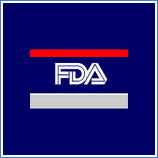US Labor Department settlement: Anheuser-Busch of New Jersey agreesto enhance safety for workers at its Jersey City, Bronx distributorships
Background: The U.S. Department of Labor’s Occupational Safety and Health Administration cited the company in December 2014 for numerous safety violations at its Jersey City distribution warehouse. Hazards included untrained forklift operators, obstructed exit routes, damaged storage racks and inadequate chemical hazard communication training. The company contested its citations on Dec. 23, 2015.
Resolution: The department and Anheuser-Busch Sales of New Jersey have reached a settlement in which the company will implement and maintain enhanced safety measures for employees at its distributorships in Jersey City at 101 Linden Avenue E and in Bronx, New York at 550 Food Center Drive.
These enhancements require Anheuser-Busch to:
Conduct comprehensive safety and health self-audits focusing on hazards involving powered industrial trucks, safety and training, material handling, hazard communication and means of egress.
Establish safety and health committees made up of management, employees, unions and individuals responsible for safety at the distributorships.
Make management responsible for implementing the committees’ recommended changes.
Make the committees’ findings, recommendations and analyses available to OSHA upon request.
Ensure the adequate training of all leased, temporary and/or subcontractors’ employees.
Consent to interim monitoring inspections by OSHA.
As part of the settlement, Anheuser-Busch has already corrected the cited hazards at its Jersey City location and paid a fine of $150,000. The settlement can be viewed here*.
Quotes: “This settlement commits Anheuser-Busch to making safety a priority for workers at its New Jersey and New York distributorships,” said Robert Kulick, OSHA’s regional administrator in New York. “Successfully implemented, this agreement will result in safer working conditions for numerous workers at multiple company locations.”
“Proactively addressing conditions at more than the cited location makes sense and pays dividends for workers and employers alike. This course of action can reduce hazards and injuries and increase a company’s productivity,” said Jeffrey Rogoff, regional solicitor for the department in New York.
The original investigation was conducted by OSHA’s Parsippany Area Office. The department’s regional Office of the Solicitor in New York negotiated the settlement for OSHA.
Background: The U.S. Department of Labor’s Occupational Safety and Health Administration cited the company in December 2014 for numerous safety violations at its Jersey City distribution warehouse. Hazards included untrained forklift operators, obstructed exit routes, damaged storage racks and inadequate chemical hazard communication training. The company contested its citations on Dec. 23, 2015.
Resolution: The department and Anheuser-Busch Sales of New Jersey have reached a settlement in which the company will implement and maintain enhanced safety measures for employees at its distributorships in Jersey City at 101 Linden Avenue E and in Bronx, New York at 550 Food Center Drive.
These enhancements require Anheuser-Busch to:
Conduct comprehensive safety and health self-audits focusing on hazards involving powered industrial trucks, safety and training, material handling, hazard communication and means of egress.
Establish safety and health committees made up of management, employees, unions and individuals responsible for safety at the distributorships.
Make management responsible for implementing the committees’ recommended changes.
Make the committees’ findings, recommendations and analyses available to OSHA upon request.
Ensure the adequate training of all leased, temporary and/or subcontractors’ employees.
Consent to interim monitoring inspections by OSHA.
As part of the settlement, Anheuser-Busch has already corrected the cited hazards at its Jersey City location and paid a fine of $150,000. The settlement can be viewed here*.
Quotes: “This settlement commits Anheuser-Busch to making safety a priority for workers at its New Jersey and New York distributorships,” said Robert Kulick, OSHA’s regional administrator in New York. “Successfully implemented, this agreement will result in safer working conditions for numerous workers at multiple company locations.”
“Proactively addressing conditions at more than the cited location makes sense and pays dividends for workers and employers alike. This course of action can reduce hazards and injuries and increase a company’s productivity,” said Jeffrey Rogoff, regional solicitor for the department in New York.
The original investigation was conducted by OSHA’s Parsippany Area Office. The department’s regional Office of the Solicitor in New York negotiated the settlement for OSHA.
Date of action: Jan. 11, 2016
Type of action: Stipulated Settlement
Names of defendants: Anheuser-Busch Sales of New Jersey LLC, a wholly owned subsidiary of Anheuser-Busch Inbev SA/NV.
Type of action: Stipulated Settlement
Names of defendants: Anheuser-Busch Sales of New Jersey LLC, a wholly owned subsidiary of Anheuser-Busch Inbev SA/NV.








